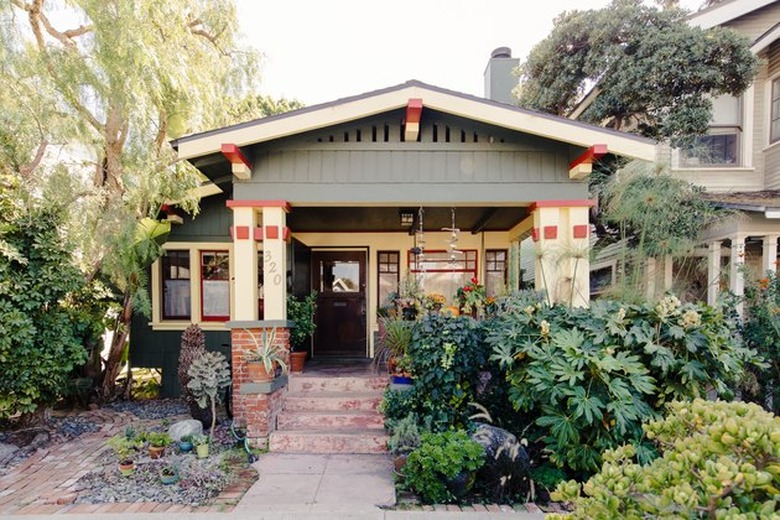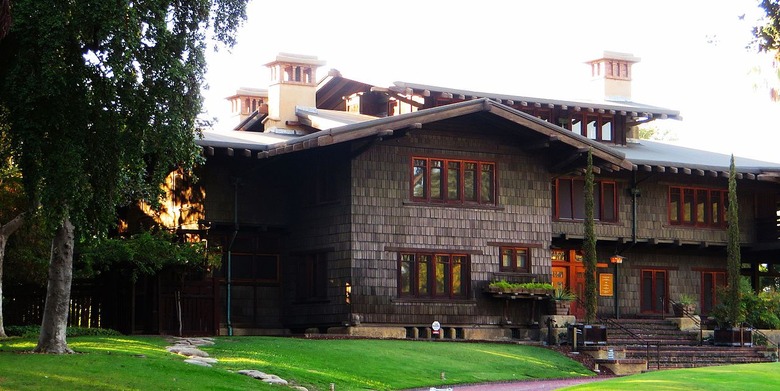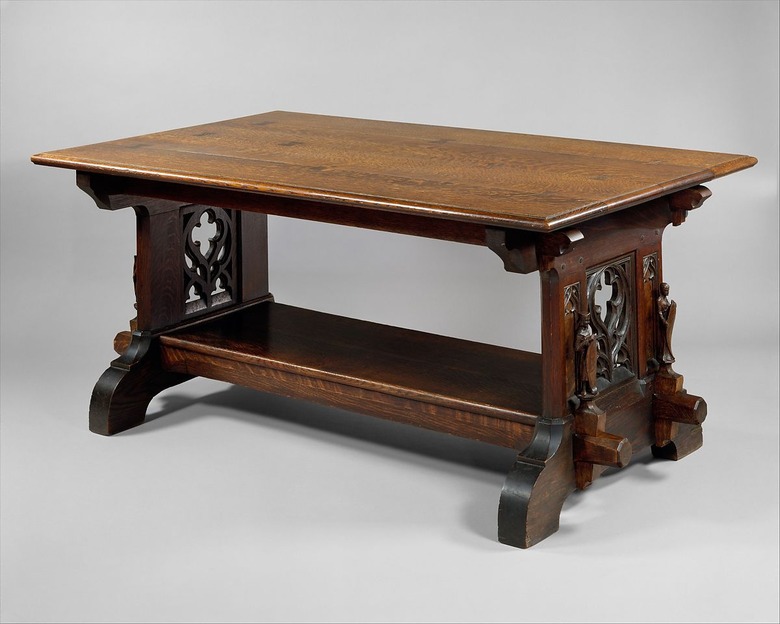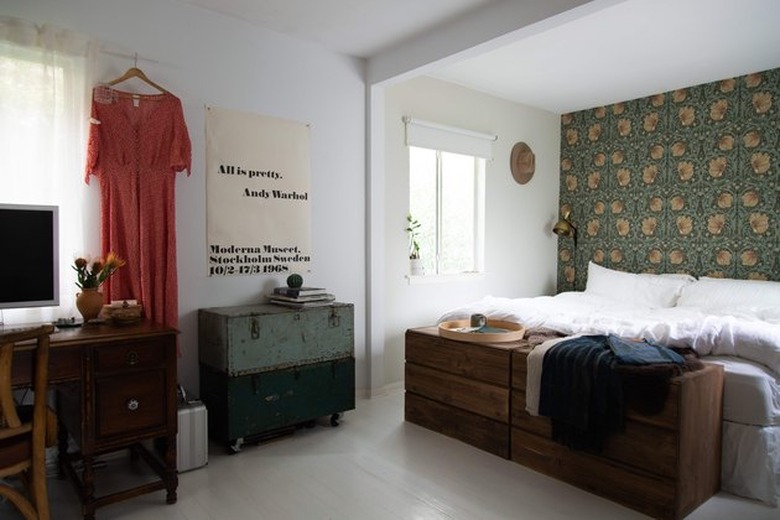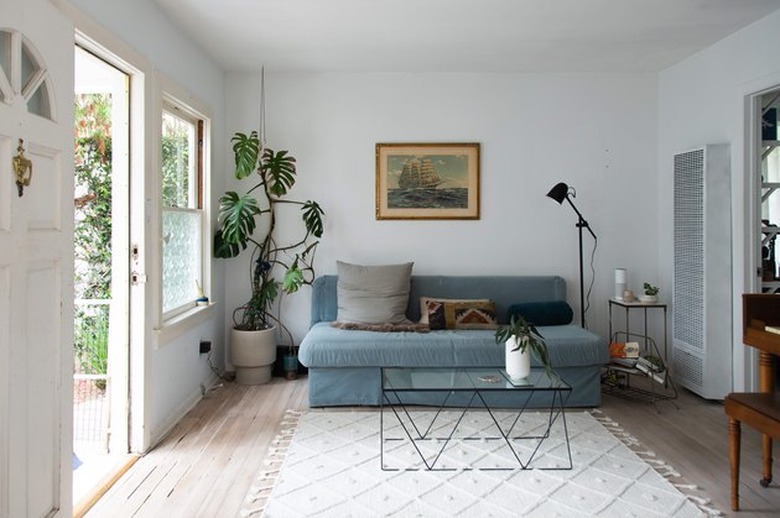How Did The Craftsman Style Come About? Here's A Quick Look At Its Origins
We may receive a commission on purchases made from links.
We love a good Craftsman-style home for its simplicity and coziness — and it turns out the style has a fascinating history.
The Arts and Crafts movement started in Britain during the late 1800s. As you might guess from the name, it focused on the handmade, particularly as a reaction to the new possibilities of mass-produced goods. Designers of this era "sought to improve standards of decorative design, believed to have been debased by mechanization," writes independent scholar Monica Obniski. The term Craftsman originates from the Arts and Crafts Movement, which remains influential today.
Below, we're taking a look at the history and origins of Craftsman style and why it's still popular today:
History of Craftsman Style
History of Craftsman Style
The Arts and Crafts movement was heavily influenced by the theories of designer A.W.N. Pugin and art critic John Ruskin. It centered around the idea of giving more exposure and respect to creators in the decorative arts and handiwork. This extended to everything from jewelry to furniture to architecture.
One of the movement's key figures, William Morris, was born in East London and was an outspoken critic of industrialization, spending his career championing the importance of handcrafted design. He produced some of the most influential patterns of the era, even though they weren't immediately accepted by design lovers.
The creators that identified with the Arts and Crafts movement wanted their values to be heard far and wide. As the Victoria and Albert Museum points out, "between 1895 and 1905 this strong sense of social purpose drove the creation of over a hundred organisations and guilds that centred on Arts and Crafts principles in Britain."
The movement made its way to the U.S. mostly through journal writings and newspapers. According to the Metropolitan Museum of Art, Boston became the first U.S. city to have a Society of Arts and Crafts, founded in June 1897. Other societies then appeared everywhere from New York to Minneapolis. Female makers like Marie Zimmerman and Florence Koehler made important contributions to the growth of the movement.
Designer Gustav Stickley helped to spearhead the movement in the U.S., primarily as the publisher of the magazine The Craftsman (which operated from 1901 to 1916). Stickley also designed a line called "New Furniture," which reflected the movement's values of simplicity, and signaled a move away from Victorian aesthetics.
The impact of the movement spread to architecture, primarily thanks to brothers Charles Sumner Greene and Henry Mather Greene, who were born in Ohio and later founded the influential Greene & Greene firm in Pasadena, California. The firm, which operated from 1894-1922, "is often associated with the finest architecture and craftsmanship of the American Arts and Crafts Movement," according to the USC Greene and Greene digital archive. Their work was also influenced by Japanese architecture. The Gamble House in Pasadena is now a National Historic Landmark that includes furnishings also designed by the duo.
Though more clearly associated with Prairie Style, Frank Lloyd Wright's architecture was also related to a lot of Arts and Crafts' ideals. According to the Frank Lloyd Wright trust, "the Arts and Crafts movement provided a powerful impetus to Wright's architectural principles, and shaped the work of his contemporaries in Europe and Great Britain." The Prairie Style came to life primarily between 1900 and 1920 and includes the sloping angles and focus on nature that the architecture of the Arts and Crafts movement sparked — although they are different categories, as some sources argue Arts and Crafts was a movement not a unified style.
Craftsman Style Today
Craftsman Style Today
In Craftsman Bungalows: 59 Homes from "The Craftsman," edited by Stickley, Alan Weissman writes about the connection between the Craftsman home as we know it today and the Arts and Crafts movement. Both, in some ways, considered elements like "the rise of the middle class" and "a growing interest in nature." As Craftsman homes emerged, they often showed a "California-mission influence." The Craftsman often described the ideal house as one that "should harmonize with its surroundings," something that led to the inclusion of porches and pergolas, as Weissman explains.
The Craftsman home became synonymous with the bungalow, a term that is actually derived from the Hindi word baṅglā and the Urdu word banglā meaning "literally (house) in the Bengal style," according to Merriam-Webster.
The Craftsman includes plans for both one- and two-floor Craftsman homes. No matter the number of floors, the Craftsman house is generally more horizontal that it is vertical. Because of this layout, its room are often quite separate. The plan focuses more on each room as its own section, rather than the rooms extending from one single hallway.
Craftsman structures make use of dark wood, stone, exposed ceiling beams, and other rustic elements that put the focus on simplicity and natural materials. You'll normally recognize them from afar by their overhanging eaves. They also often include a fireplace as a centerpiece of the home.
We've seen our share of beautiful Craftsman homes with modern decor inside, like this artsy cottage in Santa Monica, California. Some of the homes today have retained their original materials. And architects are, of course, still influenced by the style. We also love seeing the way homeowners renovate certain parts of their spaces, while still paying homage to the movement.
In 1912, Hermann Valentin von Holst wrote in Modern American Homes that you could get a California bungalow for around $2,500. There are still Craftsman homes on the market for interested parties, though of course at a higher price tag. A Zillow post from 2015 rounded up 10 Craftsman homes that were around $100,000. And the style continues to evolve, with the largest Craftsman home in the country valued at $10 million.
Craftsman homes definitely fit into the current obsession with the farmhouse aesthetic because of their overlapping focus on nature and rustic materials. The Craftsman home, then, is still a popular one in the eyes of decor and architecture lovers. We predict that won't change for a while.
